Last Updated on January 3, 2024 by Marian Jones
The Royal Mile, is the collective name for 4 different streets which stretch in a line from the Castle Esplanade down to the gates of the Palace of Holyrood. Taken together, Castle Hill, the Lawnmarket, the High Street and Canongate are ‘the spine and the heart’ of Edinburgh’s Old Town. This post takes you on a wander past all the main sights, telling some of the stories behind them. Yes, the Royal Mile is partly bagpipes and tartan shops, but it’s also history and culture, a stretch described by James Howell in 1639 as ‘one of the fairest streets that I ever saw’.
from castle hill to parliament square
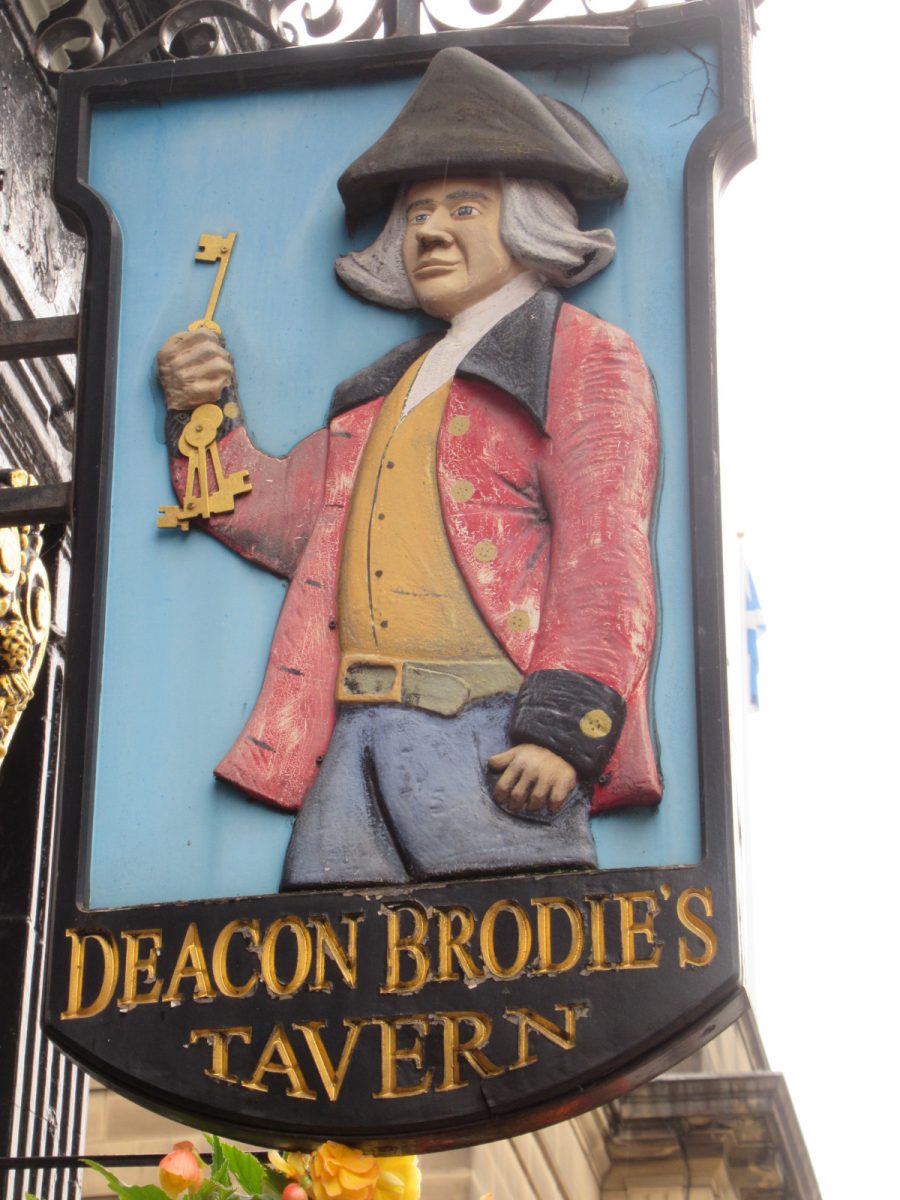
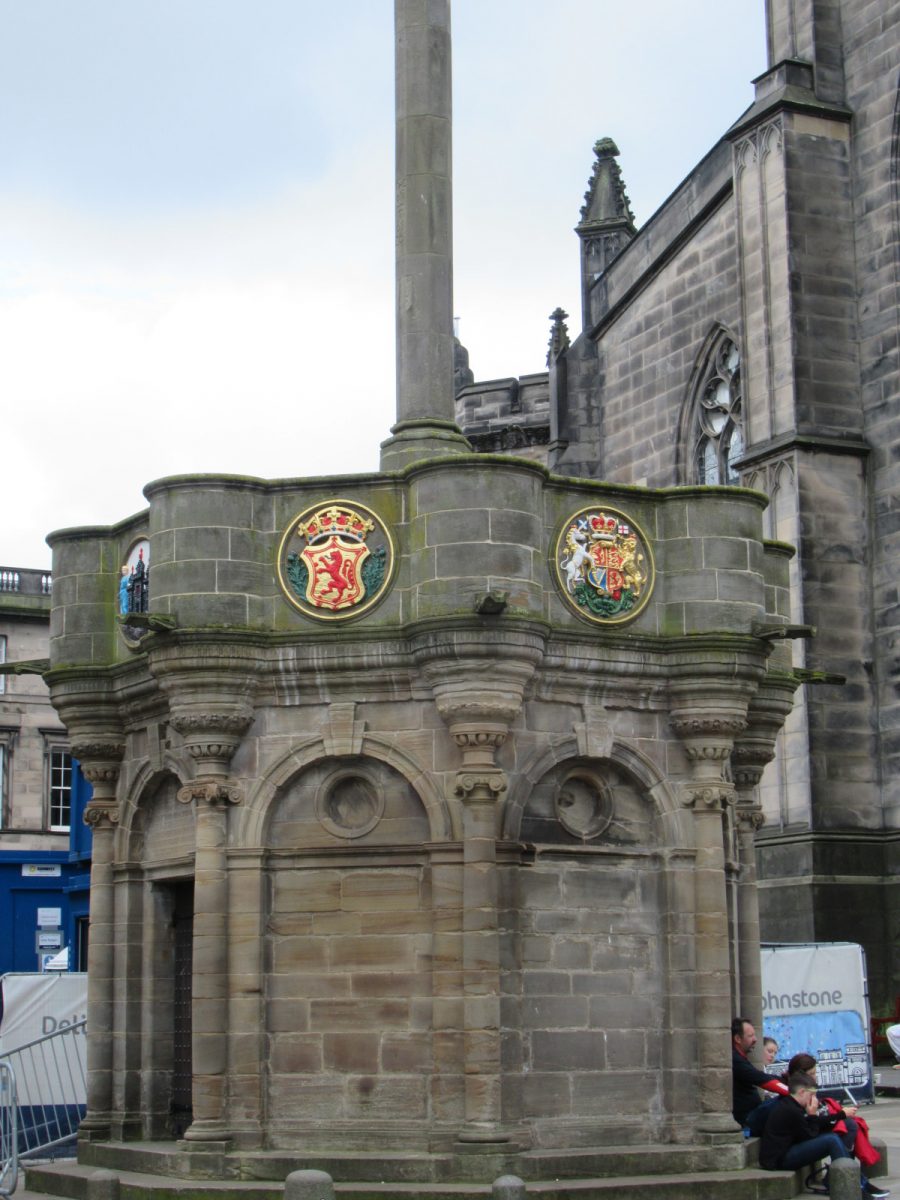
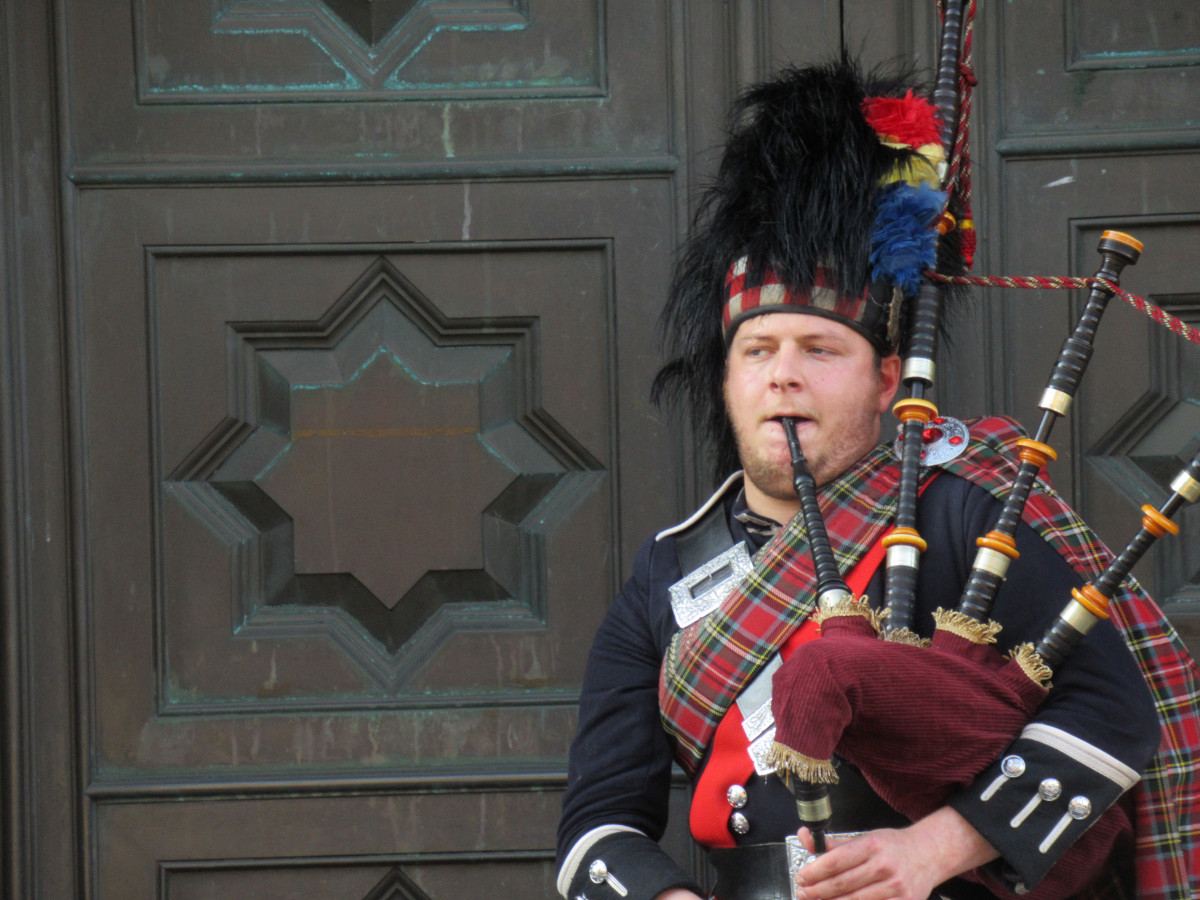
Castle Hill, leading down from the castle, is the oldest part of the Royal Mile Just past the former St John’s Kirk (now The Hub, where you can buy tickets for the Edinburgh Festival), it becomes the Lawnmarket, originally called the ‘Land Market’. This area was city’s market, mentioned in the history books as early as 1365, where sellers clustered around the ‘tron’, a device to ensure goods were weighed fairly and where beer tasters and inspectors of meat had the power to destroy goods which weren’t up to standard. Keep an eye out for Deacon Brodie’s Tavern on your left; the story of this upstanding-citizen-cum-common-thief will feature in the next post.
The Mercat Cross, in Parliament Square, just at the end of the High Street, was originally the centre of the ‘mercat’, or ‘market’ in Old Scots. It was also the place where proclamations were read, including in 1660, at the restoration of the monarchy, the news that Charles II was to be the new king. A contemporary writer described how this message was delivered ‘with ringing of bellis, setting out of bailfyres, sounding of trumpetis, roring of cannounes, touking of drums, dancing about the fyres.’ So, quite a party!
There were stocks here so that petty criminals could be pelted with rotten vegetables, and the spot now marked with a brass heart, representing the ‘Heart of Midlothian, is the site of the notorious Tolbooth Jail, whose terrifying inscription labelled it ‘a place where none can thrive, a grave for men alive’. Here too, executions were held, for example that of the defeated royalist, the Marquis of Montrose in 1650. He stunned the crowds who’d gathered to watch by wearing a new suit ‘of pure cloth, all laid with rich lace, a beaver and rich hat-band and scarlet silk stockings‘. There is more on this and on the last public hanging held here in 1864 on the podcast.
saint giles cathedral
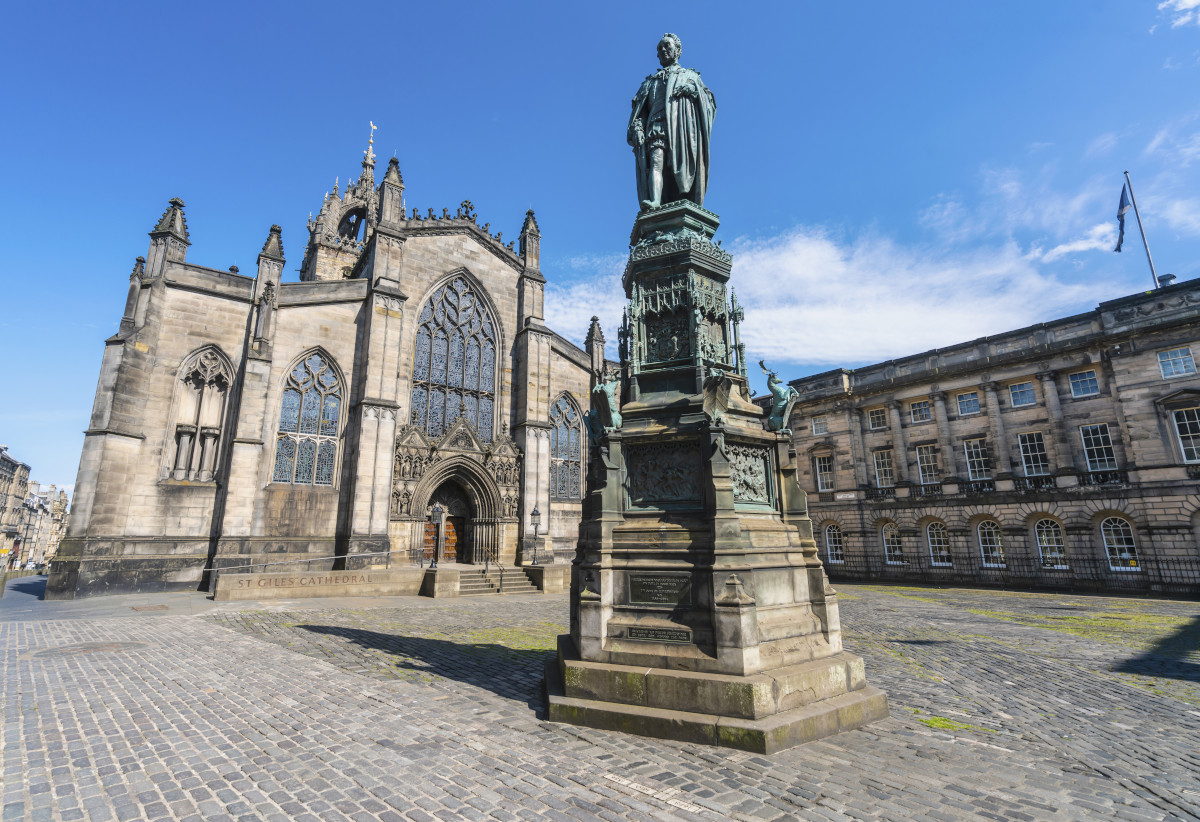
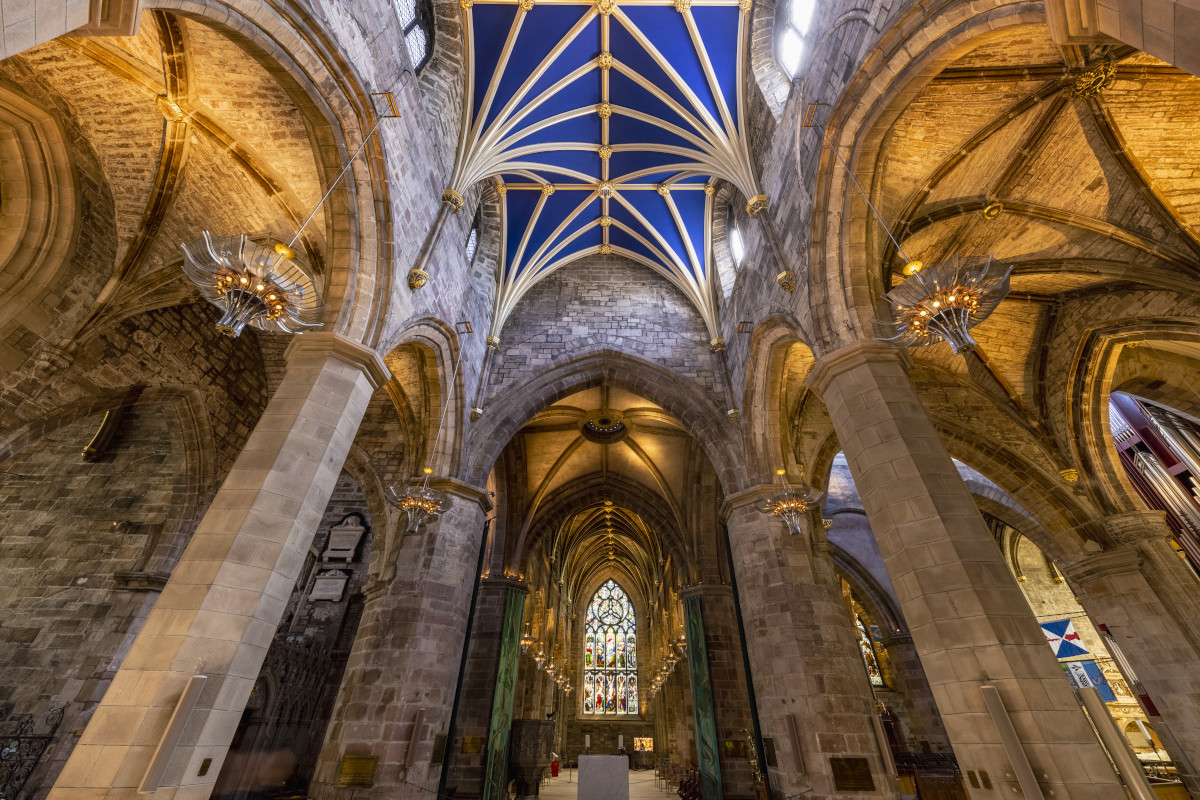
This imposing church, the ‘High Kirk of Edinburgh’ dates from many eras: its Norman pillars are 12th century, its gothic steeple was added in 1490 and the stained-glass windows were installed in the 19th and 20th centuries. St Giles played a key role in the reformation, when John Knox was its preacher, railing against ‘idolatory’ and replacing the decorated interior with plain whitewashed walls. A century later, in 1637, it was the scene of an ugly uprising against the Book of Common Prayer, introduced on the orders of Charles I. The congregation was in uproar and the eventual result was the National Covenant, an agreement stating that Charles was King of Scotland, but not Head of the Church of Scotland.
Memorials inside St Giles include one to the Marquis of Montrose and another to his sworn enemy, the Marquis of Argyle, a Covenanter. The war memorials include one to the 16th Royal Scots, noting that the entire Heart of Midlothian football team fought with them and that only one in three survived the war. There is a statue of John Knox, a ‘Burns Window’, and a chapel dedicated to the Order of the Thistle, the Scottish equivalent of Knights of the Garter. Its decorations include members’ coats of arms, and the crests of St Giles and St Andrew, along with intricate carvings of plants native to Scotland and, in the ceiling, the rose and thistle emblems of England and Scotland.
the john knox house and canongate
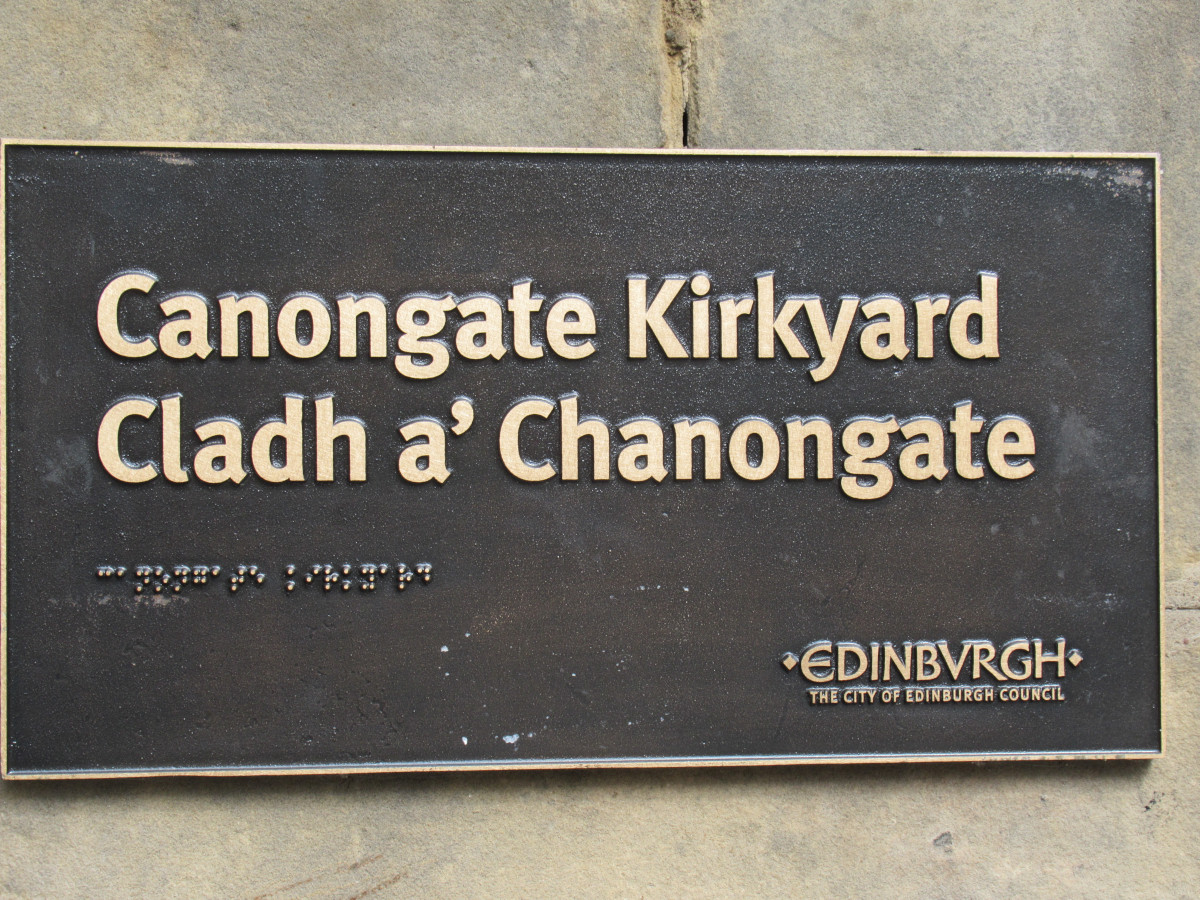

The John Knox House, just below St Giles on the left, is a museum where you can learn all about the firebrand preacher who wrote pamphlets with titles like ‘The First Blast of the Trumpet Against the Monstruous Regiment of Women’ and whose opposition to the catholic Mary Queen of Scots prompted him to remark that after she arrived back in Scotland, the sun didn’t shine for two days. That, he argued, was a sign of God’s fury at the ‘dolour, darkness and all impiety’ she represented. He railed against all forms of excess, in ‘apparel’, in ‘eating and drinking’ and also against ‘fornication … buying or selling by the wrong measure, wanton words or licentious living’
The High Street ends at the junction with St Mary Street, where brass ‘setts’ in the road indicate the start of Canongate, formerly a separate ‘burgh’ administered by the Abbey of Holyrood. Here you will pass Canongate Kirk, built in the 17th century by protestants from Holyrood who had been expelled from services at the Abbey by the catholic James I. The late Queen Elizabeth II worshipped here when in Edinburgh. In its cemetery lie a number of well-known people including Adam Smith, the 18th century economist, and the Edinburgh poet, Robert Fergusson, who died in poverty at only 24 and whose headstone was paid for by his admirer, Robert Burns. A statue of him stands outside the church gates.
Listen to the POdcast
Reading suggestions
A History of Edinburgh by Christopher McNab
Edinburgh, A History of the City by Michael Fry
Edinburgh, A Traveller’s Reader by David Daiches
links for this post
Deacon Brodie’s Tavern
St Giles Cathedral
John Knox House
Canongate Kirk
Previous episode The Palace of Holyroodhouse
Next episode Auld Reekie: The Old Town





